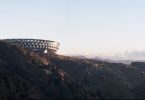ANGANGUEO, Mexico — The monarch butterfly seemed to appear out of nowhere, flapping its delicate orange and black-veined wings in the winter sun.
It flitted up the pathway next to the plodding horses that have traversed this trail so many times they know it by heart. Up and up, past the groves of oyamel firs, white birch and oak trees. It stopped at a spot where so many of its brethren slumbered, nestled next to each other like bunches of dead leaves, that they made the strong tree limbs sag.
The horses stopped in a clearing and shed their loads of camera-toting tourists eager to glimpse a phenomenon that draws perhaps half a billion monarch butterflies each winter.
The monarchs at Sierra Chincua Butterfly Sanctuary had traveled as far as some of the tourists — from Canada, Wisconsin, New York, Pennsylvania, to name a few locations.
The butterflies arrive each year near Nov. 1, the Mexican Day of the Dead. No one knows how they navigate — whether they use visual cues, some sort of magnetic orientation, light or a combination of the sun, moon and stars. But their global positioning systems are right on target.
As they get close to Mexico, their pathways begin to converge like rush hour at O’Hare. They gather in the forests between 10,000 and 12,000 feet high in the Transverse Volcanic Mountains and hibernate for several months.
Then in March, the internal compass swings north and the monarchs set off for Texas and Louisiana, where they’ll mate, lay eggs on milkweed and die. Their offspring will transform into pretty striped caterpillars and then beautiful butterflies with wings like tiny stained glass windows. They will continue the northward trek to repeat the life cycle several times each year in what amounts to a passing of the DNA torch.
The monarchs are a big draw in this area of Mexico, a four- to five-hour drive northwest of Mexico City. Some of the sanctuaries within the 124,000-acre Monarch Butterfly Biosphere Reserve are easy to get to, though all involve driving high into the mountains followed by hiking and sometimes horseback riding. Other sanctuaries are remote and get few visitors.
On weekends, many Mexican families make the pilgrimage to the well-known sanctuaries such as El Rosario, Chincua and Piedra Herrada, which are also popular for school field trips.
Monarchs are big in the pretty town of Angangueo, which boomed until a nearby mine closed several decades ago. They’re painted on the sides of buildings and taxicabs. A monarch festival is held every winter. Even the local soccer team for Michoacan state is called the Monarchs.
Small hotels cater to tourists eager to see the winged insects, and guides offer their services. While tourists can rent a car, drive to the area and hire guides, many visitors come on packaged eco-tours from the United States.
Piedra Herrada Sanctuary gets many visitors because it’s the closest to Mexico City. Along the winding two-lane road leading up to the sanctuary, signs caution motorists against traveling faster than 20 kilometers/per hour when butterflies are present. A couple of police officers are stationed in the middle of the road handing out tickets to a few speeders as cars, trucks and buses slowly wind their way past.
On a warm, sunny day in late January, the butterflies snoozing in branches in the Piedra Herrada Sanctuary woke up when the sunlight fell on their branches. At times, hundreds decided to take flight from the evergreen branches, their collective wings sounding like a slightly windy fall afternoon. The few butterflies that remained looked like orange bows adorning a Christmas tree.
Some of the butterflies alighted on flowers and even the white pages of a reporter’s notebook to rest. They needed their strength. They had a long journey ahead of them.






















